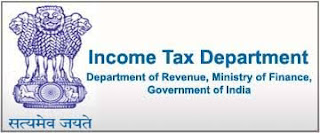Tax Deduction under Section 80C
Tax Deductions under Section 80C
This article is in continuation
of earlier part-1 entitled, “Tax Saving under Section 80C”.
(e) National Saving Certificate (NSC), Senior Citizen Savings Scheme (SCSS), 5-year Time Deposit (TD) in Post Office, Kisan Vikas Patra (KVP) and 5-Year tax-saving Fixed Deposit (FD) in Banks:
The term of above stated
investments is at least 5 years. The investments can be claimed as deduction
under section 80C.
Here the point is whether the interest earned on NSC, KVP, SCSS, TDs, FDs is taxable or not?
The interest earned on
NSC, KVP, SCSS, TDs, and FDs are liable to tax and will be included in income
of the recipient as ‘income from other sources’.
(f) Equity Linked Saving Scheme of Mutual Funds under section 80C:
The investments in mutual
funds with lock-in period of at least 3 years are eligible for deduction under
section 80C. The investments in Mutual Funds are subject to market risk and the
returns are determined on the basis of performance of the stock market during
the years of investment.
Here the point is whether the returns on such mutual fund investments are taxable or not?
The income from sale of
investments in mutual fund after the lock-in period of 3 years are considered
as Long Term Capital Gain (LTCG) and such income is taxable in the hands of recipient.
(g) Repayment of Home Loan (Principal Component) under section 80C:
In case, an individual
took a home loan for the purchase or construction of residential house and the
construction of the property is completed or possession of property is taken
during the financial year; then the amount of repayment of principal component
of the home loan can be claimed under section 80C. Any payment made to the
Government Development Authorities for purchase of residential house is also
eligible as deduction under section 80C.
(h) Payment of Tuition Fees of two children under section 80C:
The amount paid as
tuition fees during the financial year can be claimed as deduction under
section 80C. However, the portion of payment comprises development charges,
library charges, and other such charges are not counted as tuition fees. The
tuition fees should be paid for children’s education to the school or college
or university located in India only.
(i) Payment of Stamp Duty or Registration Charges for purchase or construction of residential house:
Whenever a residential
property is purchased, the buyer pays stamp duty and registration charges to
the Government. After completing the construction of house property or taking possession
of the same, the charges can be claimed as deduction under section 80C.
(j) Payments or Investments in Pension Plans under section 80CCC:
The financial
institutions, insurance companies and banks offer various types of pension or
annuity plans offering monthly pension after the date of retirement or age of
60; are eligible for claiming the deduction under section 80CCC came under the
overall limit of section 80C.
Here, the point is whether the returns from such pension plan in the form of monthly pension or in form of interest or bonus are taxable or not?
The monthly pension
received after the maturity of the pension or annuity plan, is taxable in the
hands of recipient. In case, the plan is surrendered before maturity and amount
is received, that will be taxable including interest or bonus received upon it.
(k) Payment or contribution to Government Pension Scheme under section 80CCD (1):
The salaried people or
employees can contribute up to 10% of their salary in notified government pension
account (i.e. National Pension Scheme or Atal Pension Yojana). The
self-employed taxpayers can also contribute up to 20% of their gross total
income or Rs. 1,50,000 whichever is less; to claim deduction under section
80CCD(1).
(L) Payment or Contribution to Government Pension Scheme under section 80CCD (1B):
The salaried people or
employees can also claim additional deduction of Rs. 50,000 above the overall
limit of 80C (i.e. Rs. 1,50,000) for their contribution to notified pension
scheme (i.e. National Pension Scheme or Atal Pension Yojana) under section
80CCD (1B).
The 80CCD (1) is included
in the overall limit of 80C i.e. Rs. 1,50,000 while the 80CCD(1B) is additional
deduction up to Rs. 50000 for contribution in notified Government Pension
Scheme. The total deduction can be claimed including 80CCD (1B) Rs. 150000 plus
Rs. 50000 that is Rs. 200000.
However, the deduction
under section 80 CCD (1B) is for contribution in Tier – 1 account of the
National Pension Scheme or Atal Pension Yojana.
(M) Payment or Contribution to Government Pension Scheme under section 80CCD (2):
The employers can also
contribute to the employee’s pension scheme to the extent of 10% of the
employee’s salary. In case, this amount is disbursed to the employee for
depositing into his pension account; then this amount received from employer will
be deposited into the employee’s pension account and deduction can be claimed
under section 80CCD(2). This deduction will be additional to 80C and 80CCD(1B).
Here salary includes the
Basic Pay and Dearness Allowance.
When does an individual or HUF cannot claim deduction under section 80C:
In case, the individual
or HUF earned income only from capital gains i.e. on sale of long-term assets
or securities then 80C deduction cannot be claimed to reduce the tax liability.
Overall limit of deduction under section 80C:
Section 80CCE of income
tax details that the amount of deduction under section 80C, 80CCC, and 80CCD
(1) cannot exceed more than Rs. 1,50,000.
It is worth to mention
here that the deduction of 80CCG which was started for investments under a
government approved equity savings scheme (Rajiv Gandhi Equity Saving Scheme)
had been discontinued from the Financial Year 2017-18.
*Copyright © 2018 Dr. Lalit
Kumar. All rights reserved.




















